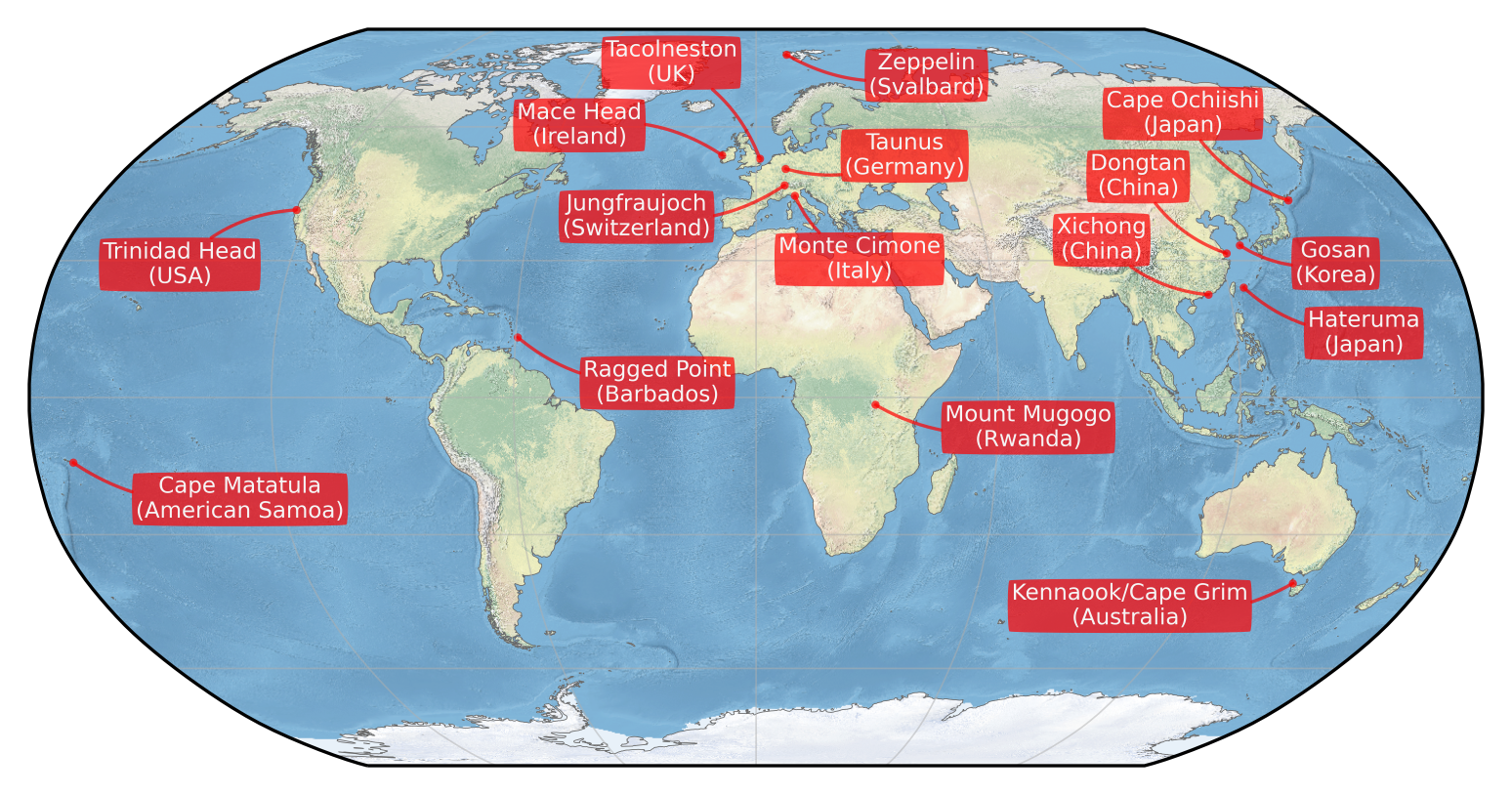Advanced Global Atmospheric Gases Experiment (AGAGE)
The Advanced Global Atmospheric Gases Experiment (AGAGE) network has been measuring the composition of the global atmosphere continuously since 1978. The ACRG runs three AGAGE stations: Mace Head, on the west coast of Ireland; Ragged Point, Barbados and Tacolneston, located in Norfolk, UK. Mace Head and Ragged Point are ideally situated to resolve baseline northern hemispheric trends, while Tacolneston regulalrly intercepts air masses from continental Europe, providing valuable information on regional emissions.
All sites are equipped with a wide range of instrumentation. The Medusa GCMS is the most technically sophisticated instrument at AGAGE sites. It was developed to measure the full range of Montreal (ozone depleting) and Kyoto Protocol (global warming) gases. Measurements from the AGAGE network provide an important cross-check for national emission inventories submitted to the United Nations Framework Convention on Climate Change (UNFCCC).
AGAGE data are publicly available from the AGAGE website.



